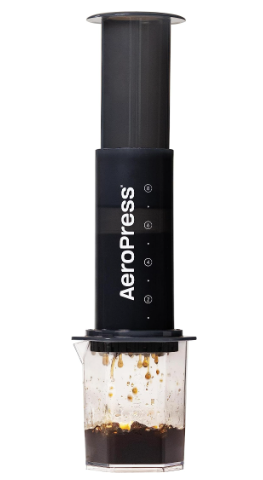Brewing Method vs. Flavor: Which Method Best Reveals Origin Notes?
BLOG NEWS
10/4/20255 min read


Understanding Origin Notes in Coffee
Origin notes in coffee refer to the distinct flavors and aromas that are characteristic of coffee beans from specific geographical regions. These notes are influenced by various factors including the region where the coffee is grown, the varietal of the coffee plant, and the processing methods employed after harvesting. Each of these elements contributes to the overall flavor profile, providing unique tasting experiences that coffee enthusiasts seek to identify and appreciate.
The geographical region greatly affects the coffee's flavor. For instance, beans grown in Ethiopia are often noted for their fruity and floral characteristics, while those from Colombia might exhibit a balance of sweetness and nutty undertones. Elevation, soil composition, and climate conditions further enhance these distinctive flavor notes, making their geographical origin a critical aspect of tasting coffee. Understanding the specific terroir can significantly elevate one's appreciation for the delicate nuances present in each cup.
Another factor that plays a crucial role in defining origin notes is the varietal of the coffee plant. There are numerous coffee varietals, each possessing distinct flavor profiles. For example, Arabica beans are generally regarded as possessing sweeter and more complex flavors compared to Robusta beans, which tend to be more bitter. As such, distinguishing between these varietals can help aficionados better appreciate and articulate the flavors found in their coffee.
Lastly, the processing methods applied to coffee beans — such as washed, natural, or honey processed — also influence the flavor. Each technique imparts different attributes to the beans, affecting how the origin notes manifest in the final brew. Therefore, recognizing and understanding the interplay of these aspects is essential for coffee enthusiasts who wish to delve deeper into the world of coffee tasting and experience the richness that origin notes bring to their cups.
Common Brewing Methods and Their Characteristics
Understanding the impact of brewing methods on the extraction of flavors is crucial for coffee enthusiasts aiming to appreciate the origin notes in their cup. Each method uniquely influences the brewing environment, which includes factors such as temperature, brew time, and grind size. These variances can dramatically affect the flavor profile of the final brew.
The pour-over method, known for its manual precision, uses a cone-shaped filter where hot water is poured over coffee grounds. This method allows for a controlled flow rate and extraction time, typically ranging from two to four minutes. The result is a clean and vibrant flavor profile that highlights the intricate notes typical of the coffee's origin. A medium grind size is commonly recommended to optimize extraction.
Conversely, the French press method introduces a full-bodied experience to the brew. By steeping coarsely ground coffee in hot water for four to five minutes, the French press retains essential oils and sediment, resulting in a richer taste. This method is advantageous for those looking to experience robust origin notes, although it may mask some delicate flavors. The grind size should be coarse to prevent over-extraction.
Espresso, a concentrated coffee brewing technique, employs high pressure to force hot water through finely ground coffee. The extraction process takes about 25-30 seconds, yielding a small, intense shot of coffee. This method often enhances the sweet and bitter notes, making it a unique way to experience lighter coffee origins. The fine grind used in espresso maximizes flavor extraction but also requires careful attention to the brewing parameters to avoid sour or overly bitter results.
Finally, the AeroPress combines the ease of a French press with the precision of pour-over. This method uses air pressure to push hot water through the coffee grounds. With variable brew times and grind sizes, the AeroPress offers a versatile platform for exploring flavor profiles, facilitating a diverse exploration of origin notes. Its adaptability makes it suitable for both finely and coarsely ground coffee, allowing users to experiment with extraction methods.
Comparative Analysis of Brewing Methods on Flavor Extraction
The extraction of flavor notes in coffee, particularly those indicative of its origin, is significantly influenced by the brewing method employed. Each brewing technique, from espresso to pour-over, utilizes different equipment and processes that can enhance or mask these intrinsic characteristics. Understanding how each method impacts flavor extraction is crucial for enthusiasts and professionals alike in their quest to appreciate the subtleties of coffee.
One key factor in the brewing process is the type of equipment used. For instance, when using an espresso machine, the high pressure forces water through finely ground coffee, resulting in a concentrated flavor profile. This method often highlights more robust origin notes, while potentially overshadowing lighter, more delicate flavors prevalent in certain single-origin coffees. Conversely, methods like pour-over allow for greater control over water temperature and infusion time, leading to a cleaner cup that can better showcase the coffee's unique characteristics.
Water quality is another critical element that cannot be overlooked. The mineral content and temperature of the water used can drastically alter the extraction process. Water with higher mineral content tends to enhance body and sweetness, potentially masking subtle origin notes. In contrast, using water that is too soft or too hot may result in under-extraction, failing to fully reveal the coffee's complexity. This highlights the necessity for coffee brewers to use filtered water within the optimal temperature range, typically between 195°F and 205°F.
Moreover, technique variations, such as grind size and brew time, add another layer of complexity. A coarser grind used in methods like French press may yield a fuller body but can lead to muddled flavors if steeped too long. In contrast, a finer grind for methods like Aeropress might extract brighter notes but risk over-extraction if not timed precisely. Through practical examples, such as comparing Ethiopian Yirgacheffe brewed via AeroPress and pour-over methods, one can observe the stark differences in optical clarity and flavor profile that underscore the nuances of origin notes. The interplay of these factors ultimately determines how effectively each brewing method reveals the coffee's unique characteristics.
Choosing the Best Brewing Method for Highlighting Origin Notes
When it comes to revealing the unique origin notes of coffee, selecting the appropriate brewing method is essential. The myriad of brewing techniques available can significantly influence the flavors extracted from the coffee beans, enhancing or muting specific origin characteristics. To ensure the best experience, one should consider personal taste preferences, the type of coffee being brewed, and the desired outcome.
First, understanding your taste preferences is key. Some individuals may favor a smooth, mellow cup illuminated through a method that emphasizes body, such as a French press or pour-over. Others might prefer the bright acidity and clarity typically showcased by methods like Aeropress or Chemex. Experimenting with various brewing styles can help you discover which methods resonate with your palate and enhance your appreciation of the origin flavors.
Next, the specific type of coffee being brewed plays a crucial role in the optimal brewing method selection. Different coffee beans, whether they are Arabica or Robusta, exhibit distinct flavor profiles that may be better suited to certain brewing techniques. For instance, light-roasted coffees, often rich in fruity and floral notes, are generally best disclosed through brewing methods that allow for a quick extraction, such as pour-over. In contrast, darker roasts may benefit from longer brewing times to fully release their more robust and earthy characteristics.
Finally, considering the desired outcome can further refine the brewing choice. Whether aiming to highlight sweet notes, bright acidity, or robust flavors, aligning your method with these intentions will yield better results. Home brewers should be encouraged to experiment with different grind sizes, water temperatures, and brew times, as these factors can significantly impact the clarity of origin notes.
One of our most eco-friendly coffee makers..
AeroPressXL Coffee press


Click 'Shop Now!' to find on Amazon now....
Specs
The AeroPress XL is an upsized version of the original AeroPress coffee maker, designed to brew larger volumes while maintaining the core benefits of its unique immersion and pressure-based method. It holds about 20 fluid ounces (around 590 ml), allowing users to make up to two full cups of coffee or several espresso-style shots in one press. The device is made from BPA-free plastic, and it comes with a shatterproof Tritan carafe designed to handle the increased brew size. Its dimensions are roughly 4 inches in diameter by 10 inches tall, making it significantly larger than the standard model. The brewing method combines immersion, aeration, and micro-filtration, delivering a smooth, low-acidity cup of coffee. The kit includes 100 XL-specific micro filters, a scoop, stirrer, and the custom carafe.
Pros and Cons
Pros
One of the biggest advantages of the AeroPress XL is its increased capacity. If you’re someone who often makes coffee for two or more people, or simply wants more in one go, this model saves time and effort compared to repeating brews with the original. It still delivers a clean, rich cup thanks to its fine paper filters and pressure-based brewing. The unit is lightweight yet durable, making it suitable for home or travel, and cleaning is straightforward—grounds eject cleanly and parts rinse off easily. You also retain control over brew time, temperature, and grind size, which makes it great for dialing in your personal taste preferences.
Cons
However, its larger size does come with drawbacks. The brewer is taller and bulkier, which may not suit small kitchens or tight travel setups. It also uses different filters than the original AeroPress, meaning you can’t interchange accessories or use third-party options built for the standard model. Handling the increased hot water volume requires more care, especially when pressing, as the unit can become top-heavy and harder to stabilize. The included carafe, while functional, lacks a handle, making pouring less ergonomic, particularly when it's full. Also, the overall design may feel less portable than what AeroPress fans are used to.
Our Review
The AeroPress XL successfully brings the beloved brewing qualities of the original to a larger format, and it does so without compromising on taste. We found the coffee produced to be consistently smooth, aromatic, and free of the bitterness or grit you might get with French press or other manual methods. The extra capacity makes it ideal for households, office use, or anyone who wants more than just a single cup. It still brews fast, with most cups done in under two minutes, and the cleanup remains one of the easiest among manual brewers.
That said, the bigger size changes the user experience slightly. It takes more counter space, the plunger needs firmer pressure to push through more liquid, and you have to be a bit more cautious with setup—especially if you use the inverted method. The separate filter size also means you'll need to plan for ongoing supply. And while the carafe is a nice inclusion, its lack of handle makes pouring awkward, especially with hot liquids.
In short, the AeroPress XL is a great step up for regular AeroPress users who want more coffee per press without sacrificing the quality and convenience they've come to expect. But for solo coffee drinkers or frequent travelers, the original model or AeroPress Go may still be the better fit.
